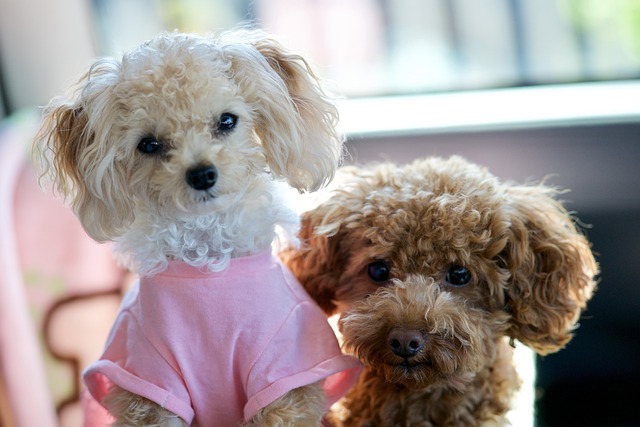
How can I tell if my dog's heatstroke is serious
Let’s be real: It’s a sticky August morning in Los Angeles, and you took your 2-year-old Golden Retriever, Max, for a walk a little later than usual
Poodles have those curly, dense coats that seem to hold onto water like a sponge. Skip proper drying, and you might end up with tangles, a musty smell, or even skin irritation. Getting them dry doesn’t have to be a hassle—with the right steps, it can even become a bonding moment.
Start by soaking up excess water right after the bath. Use a microfiber towel—they’re super absorbent and gentler on their curls than regular towels. Pat (don’t rub) their coat, working from head to tail. Pay extra attention to the armpits, between the toes, and around the ears—those spots trap moisture. If your poodle has a topknot or longer fur around the face, gently squeeze out water to avoid drips.
A hairdryer can speed things up, but go slow. Use the lowest heat setting—high heat can damage their hair and burn sensitive skin. Hold the dryer 6 to 8 inches away, moving it constantly to avoid hot spots. Some poodles get nervous around the noise, so start with short sessions, offering treats to make it positive. If they panic, take a break and try again later—no need to rush.
For curly coats, a slicker brush while drying helps prevent mats. As you blow-dry, brush through small sections, starting at the ends and working up to the roots. This separates the curls and lets air reach the skin, ensuring everything dries thoroughly. If you’re not comfortable doing this yourself, professional groomers often use stand dryers, but check that their equipment meets local safety standards—many areas regulate tools used on pets.
 Consider the weather and your home setup. On warm, sunny days, a quick towel dry followed by supervised time in a draft-free spot by a window can help. But avoid leaving them damp in cool rooms—chills can lead to discomfort. If you use a crate, line it with a dry towel and leave the door open so they can move around while finishing off. Never lock a damp poodle in a crate, as it raises the risk of skin issues.
Consider the weather and your home setup. On warm, sunny days, a quick towel dry followed by supervised time in a draft-free spot by a window can help. But avoid leaving them damp in cool rooms—chills can lead to discomfort. If you use a crate, line it with a dry towel and leave the door open so they can move around while finishing off. Never lock a damp poodle in a crate, as it raises the risk of skin issues.
Trimmed poodles dry faster, but even with shorter cuts, don’t skip thorough drying. Those tight curls still trap water close to the skin. After drying, run your hands through their coat to check for damp spots—if you feel any coolness or clumps, go over those areas again with a towel or low-heat dryer. Once they’re fully dry, a final brush-through keeps their coat fluffy and mat-free.
Drying time depends on their coat length and how much water they retained, but it’s time well spent. A properly dried poodle is a happy, healthy one—no itchy skin, no stinky fur, just a soft, bouncy coat ready for play. With a little patience, you’ll both get the hang of it, turning bath time follow-up into a routine that feels less like a chore and more like part of caring for your curly companion.

Let’s be real: It’s a sticky August morning in Los Angeles, and you took your 2-year-old Golden Retriever, Max, for a walk a little later than usual

You're enjoying a summer afternoon at the park when you notice your dog has stopped panting and appears disoriented - their gums are bright red

Let’s paint the picture: You’re in your Denver apartment, watching your 4-year-old Boston Terrier, Ruby, plop down mid-play session with her favorite toy

Many dog owners notice their pets nails seem shorter after regular walks,but how much does this daily activity actually help?The answer depends on where you walk—concrete sidewalks or asphalt streets gently file nails as a dog's paws hit the ground

Most dog owners notice their pup scooting across the carpet at some point, but few connect it to impacted anal glands. These small sacs near a dog’s rectum secrete a scent for marking territory

Most vets agree that regular dog teeth cleaning is key to avoiding painful dental issues later. For healthy adult dogs, a professional cleaning at the vet’s office every 12 to 18 months usually works well.